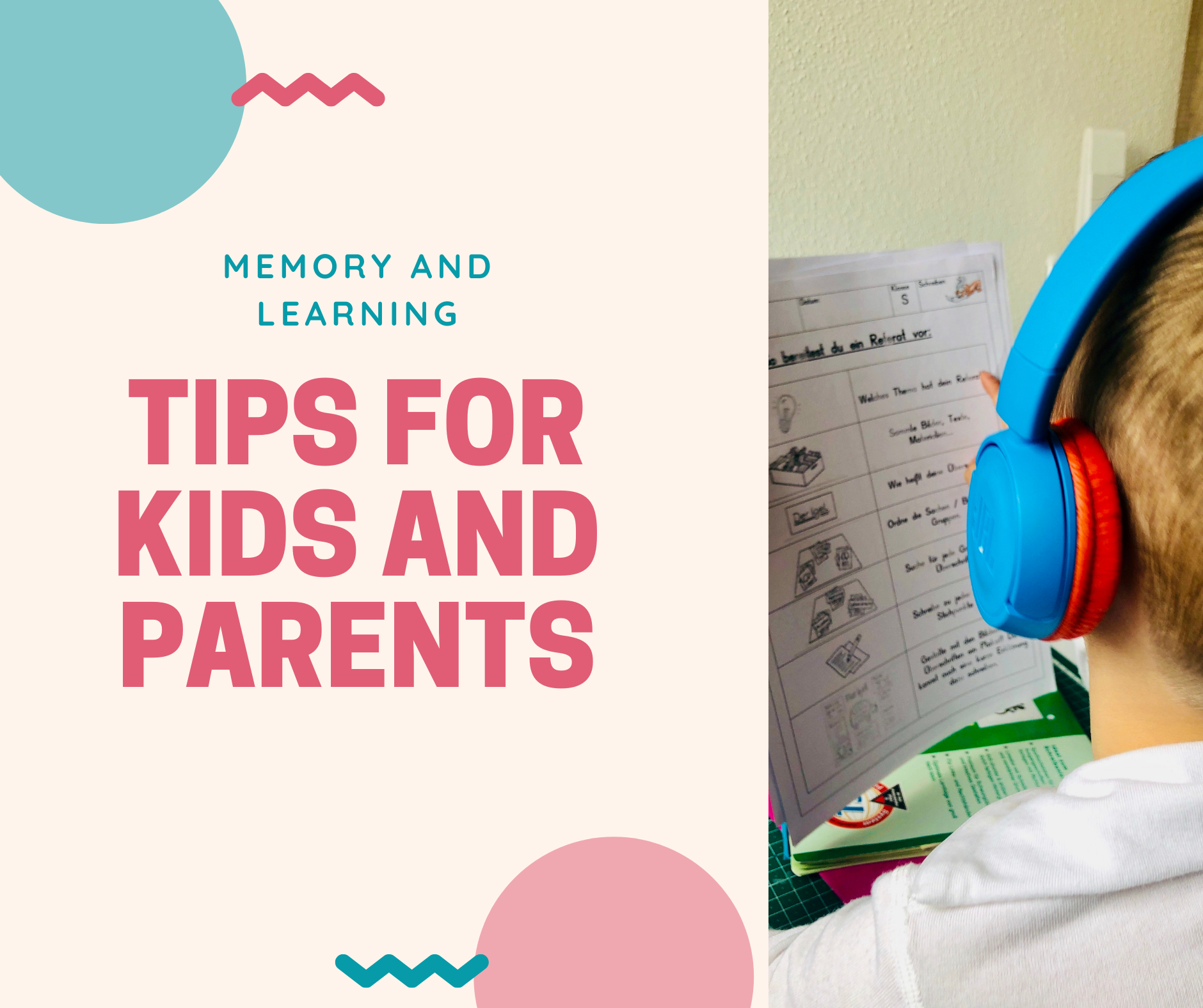Introducing and Practising Languages - Language Box
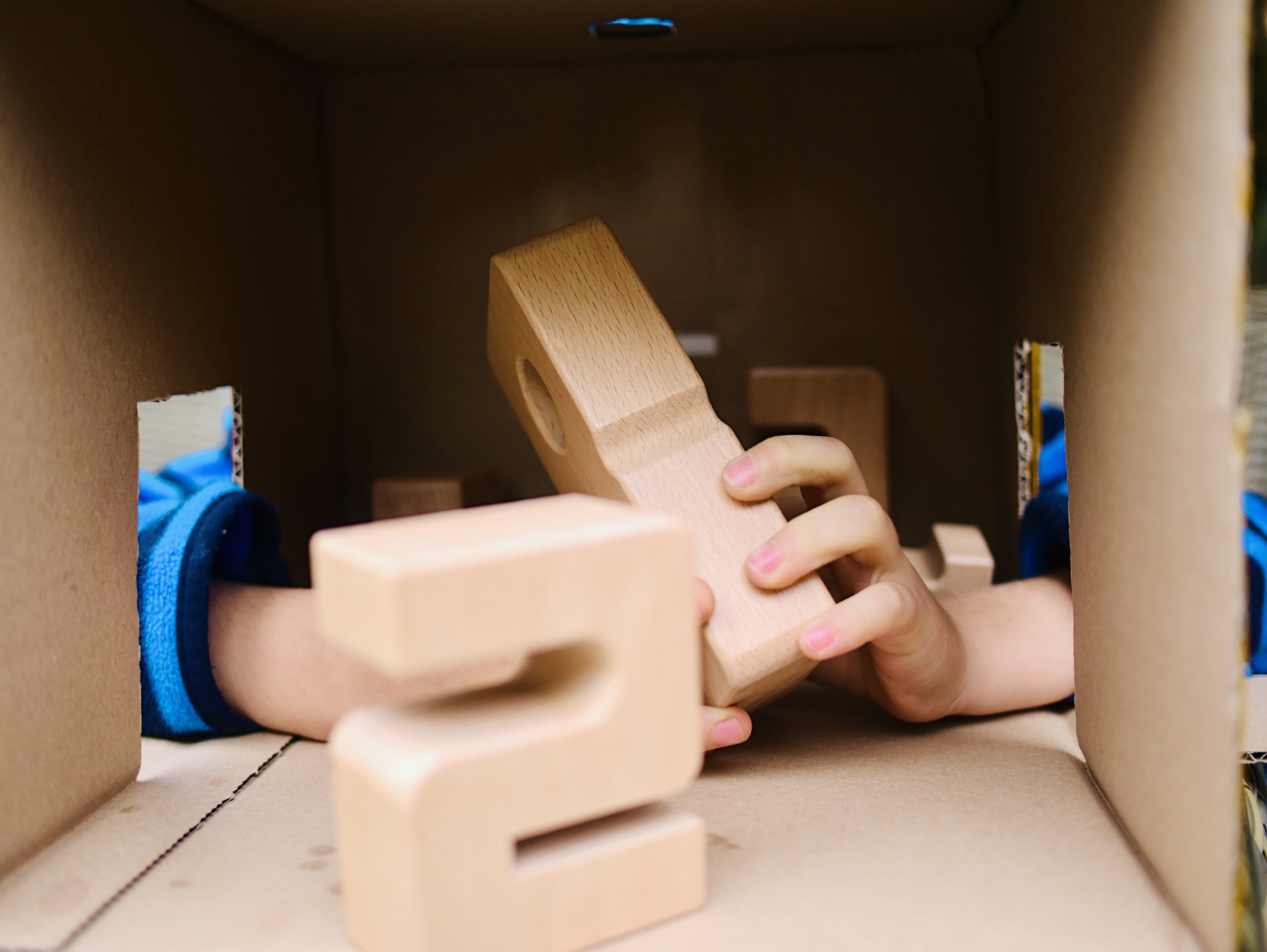
A few days ago, Power P came home from school super excited.
"Mummy, today we learned numbers in English." (A short digression-English is the third language in our family. We speak Croatian at home and live in Germany. Both kids have been exposed to English occasionally, mostly through books, songs, and English-speaking friends, and now they have it as a school subject.)
He was over the moon. Honestly, I wasn't sure why he made such a big deal out of it - he could count in English when he was two and a half. But, as he explained later, the difference was that he had learned it IN SCHOOL. And when you are in the first grade, school seems to be an amazing place.
Interesting facts about attitudes towards school (1):
- Dislike and criticism toward school usually increases with age
- School satisfaction declines radically after the first grades
- Girls are more satisfied with school than boys
- Those who succeed better in school are more satisfied
Even though they don't get any homework, Power P asked me to prepare something for practising saying numbers in English. We quickly came up with this idea. It's super easy to prepare, and kids can play with (almost) anything that fits inside the box.
All you need is a box. Just cut out a hole on each side, big enough for kids' hands to fit in.
Once the box is ready, think of a vocabulary you want to practise. Remember, it's not only for additional languages. It can be used for building vocabulary in the mother tongue (first language) as well. We used ours to play in German, Croatian, and English.
How to introduce or practise vocabulary with a language box?
- Name the items as you're putting them in the box. The child repeats (or just listens).
- Demonstrate the activity. Put your hands through the holes in the box, grab an item, touch it, feel it, and guess what it is.
- Take it out and say the word one more time. The child repeats.
- Take turns.
- If the child already knows the words, you can skip these steps and get to the part when the kid does everything.
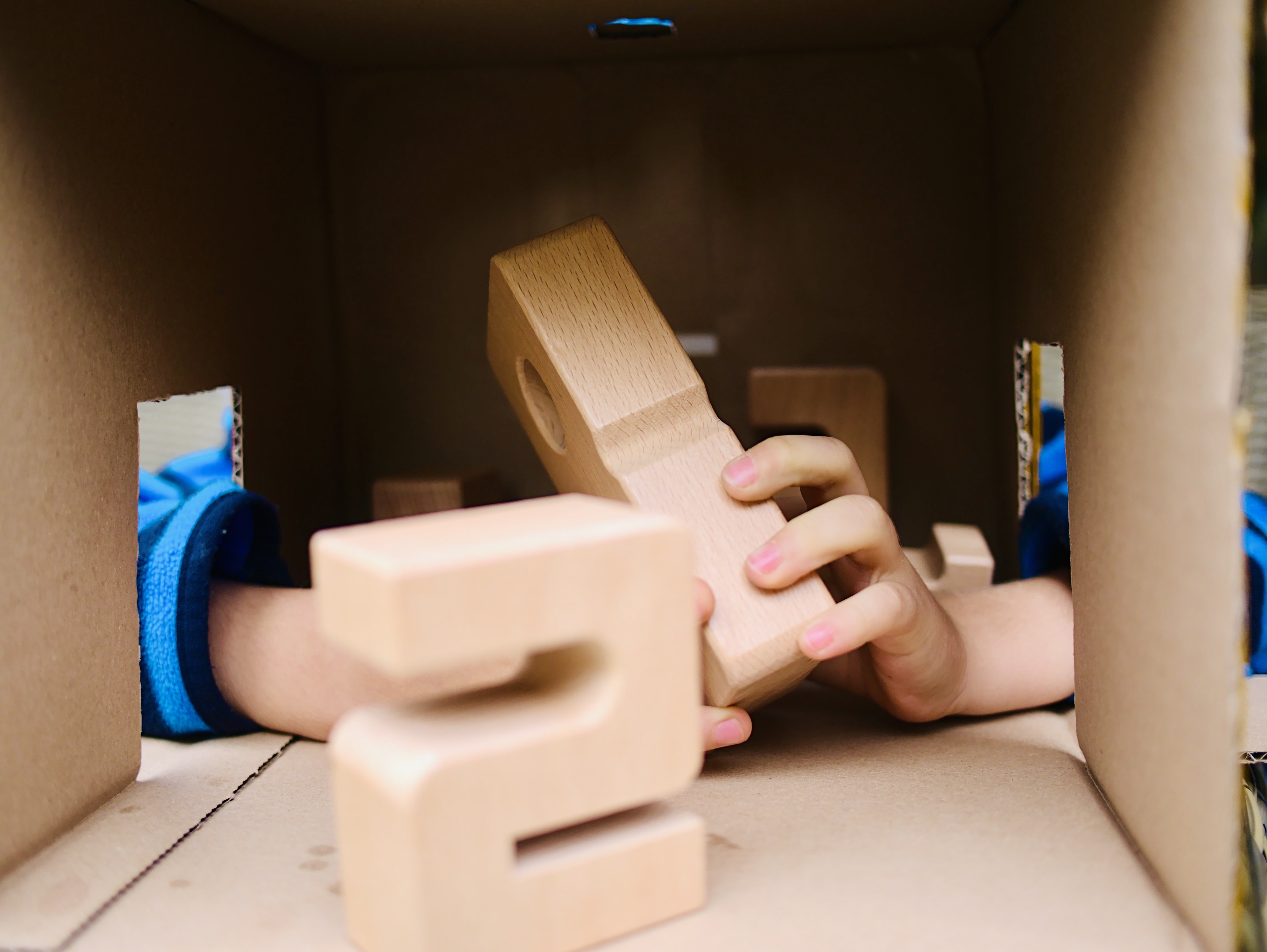
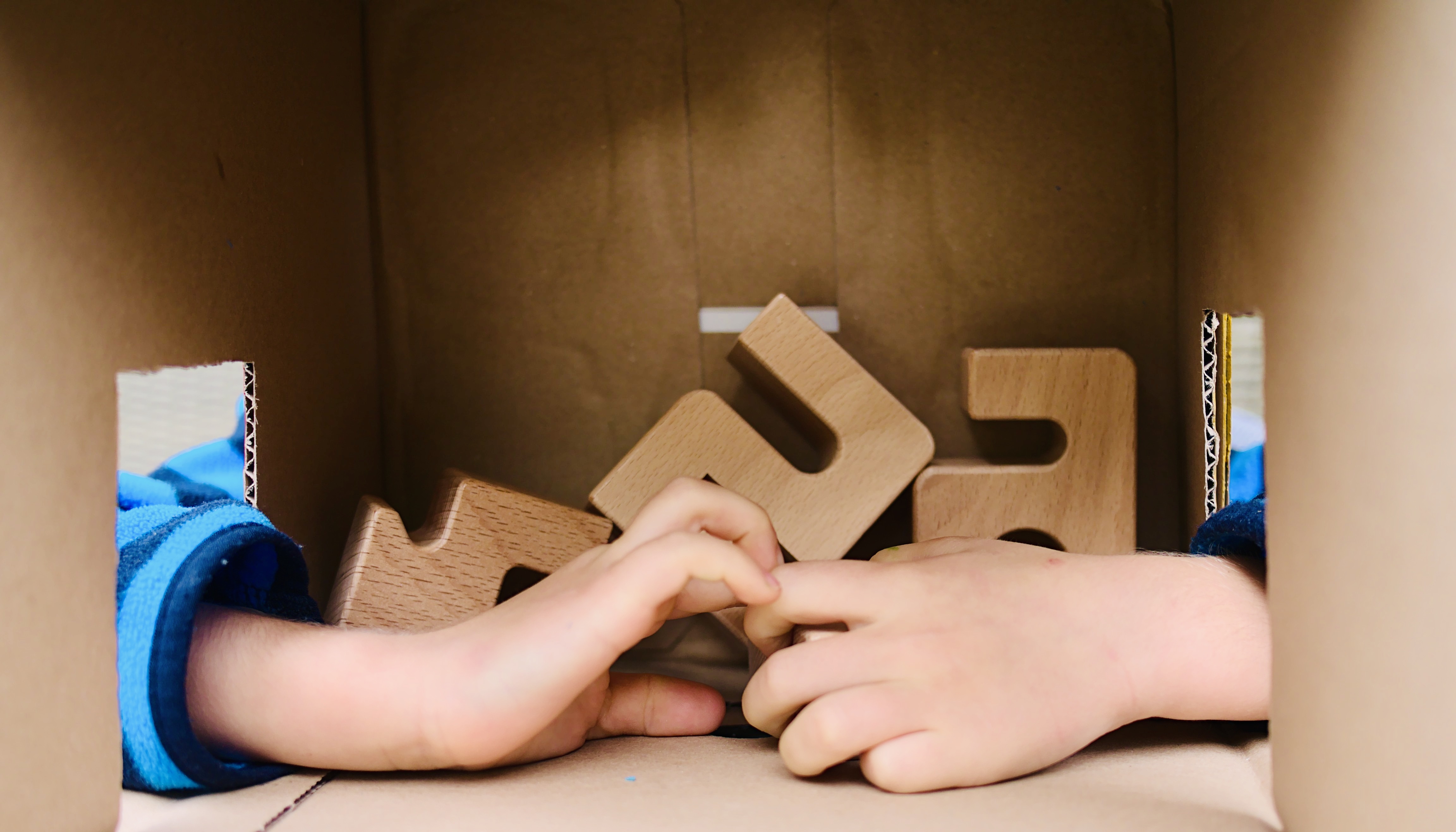
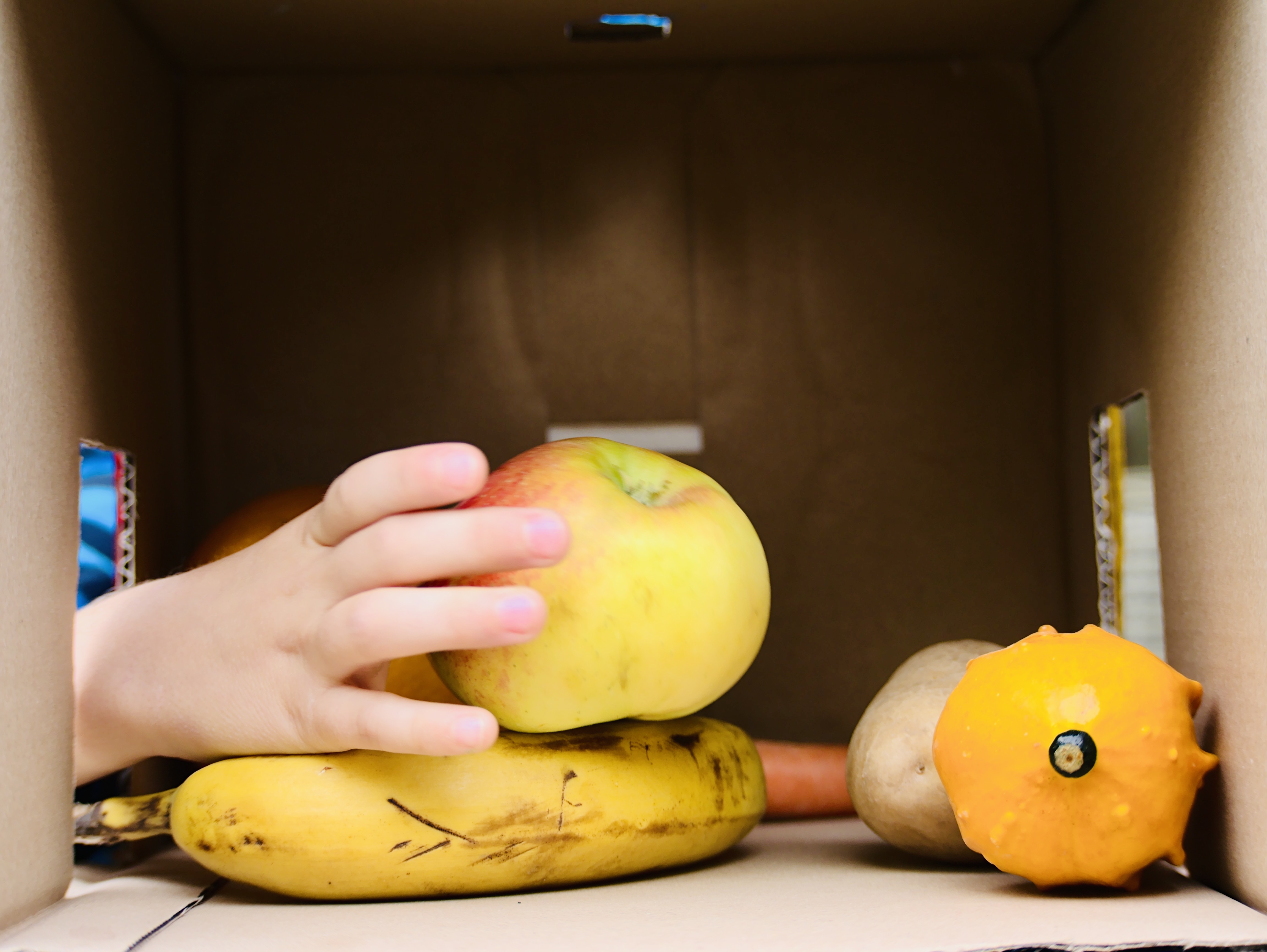
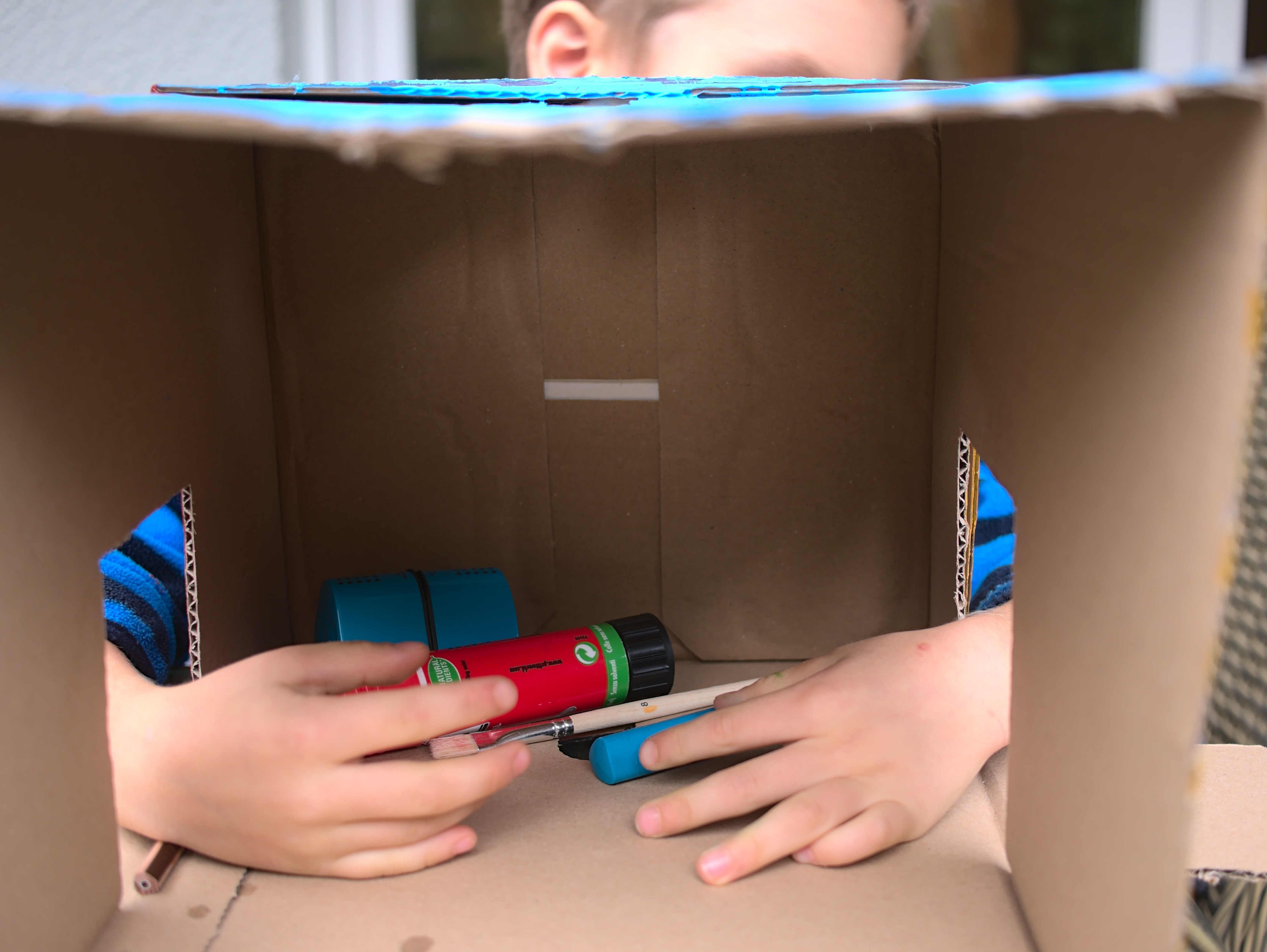
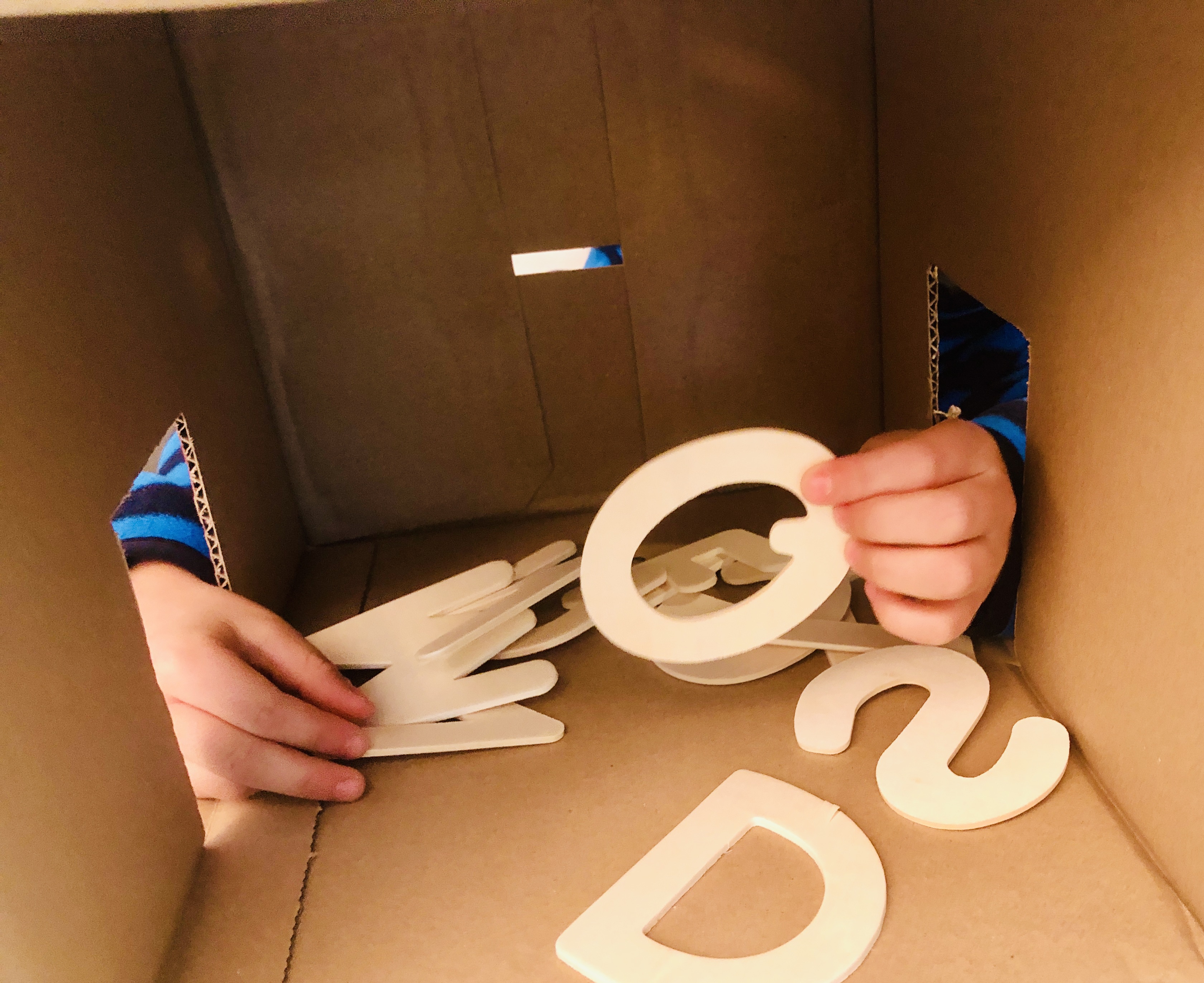
This time, probably because they learned numbers two days before in school (and school is a super important part of their lives right now), both Einstein E and Power P loved the first activity the best. The second was also interesting, but they ate most of the fruit during the game.
(1) Metsämuuronen, J., Svedlin, R. & Ilic, J. (2012). Change in Pupils’ and Students’ Attitudes toward School as a Function of Age – A Finnish Perspective. Journal of Educational and Developmental Psychology; Vol. 2(2). 134-151
